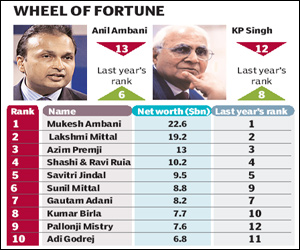The socio-economic census that the government has placed its faith in, to replace the R32 urban poverty line, has a chequered history. The government has been talking of this for over a decade but no concrete number has been arrived at so far. The new BPL census is under way right now and based on its findings, an expert committee, to be set up by the rural development ministry and the Planning Commission, will use the data it throws up to come to a new definition of who the poor are.
 The first BPL census was conducted in 1992 and identified 52.49% of the rural families as BPL. The second census in 1997 found 41.05% families to be under the poverty line. The next census was attempted in 2002. However, the People’s Union of Civil Liberties (PUCL) intervened and the Supreme Court ruled that the census need not be finalised.
The first BPL census was conducted in 1992 and identified 52.49% of the rural families as BPL. The second census in 1997 found 41.05% families to be under the poverty line. The next census was attempted in 2002. However, the People’s Union of Civil Liberties (PUCL) intervened and the Supreme Court ruled that the census need not be finalised.
Later, in 2005, based on the advice given by the additional solicitor general, the government decided to finalise the results of the 2002 BPL census without deleting the BPL families identified in the 1997 BPL census for the Ninth Plan. Since the results were contentious, no all-India number was collated from the data on each state.
As a result, the the 2007 census, to meet the needs of the Eleventh Plan, was also dropped. The BPL census for the 12th Plan is to be conducted by the ministry of rural development in collaboration with the ministry of housing and urban poverty alleviation (HUPA) and the registrar general of India to identify the households living below the poverty line by December 2011.
The BPL census is not based on the poverty line numbers. While the BPL survey for the Ninth Plan identified the poor on the basis of three criteria, namely those with an annual income of less than Rs 20,000 or less than 2 hectare of land or without fridge or TV, the BPL survey for the rural population in the 10th plan was to assess the degree of deprivation in terms of 13 parameters. And families having less than 15 marks out of 52 would have been classified as BPL.
BPL families identified through the survey will not be restricted to just the absolute poor but to also to those with nutritionally deprived children, hill people, fisher folk and similar other deprived communities. Such a flexible scale for identification of the poor is almost certain to bloat the estimates. As noted by some planners like NC Saxena, though there was only 18.03 crore households in the country, as per the population projections as on March 2000, a total of 22.32 crore ration cards were issued.
The errors are starkly brought out by the 2004-05 consumer expenditure survey of the NSSO which, for the first time, had a question on possession of BPL ration cards by households in rural areas. A cross tabulation showed that only 39% of rural households identified as poor by using the official poverty line possessed a BPL card. This meant that 61% of rural households who were designated as poor were excluded from the rural BPL list. In the case of the richest quintile, nearly 20% actually had BPL cards; it was 36% in the quintile just above this.
